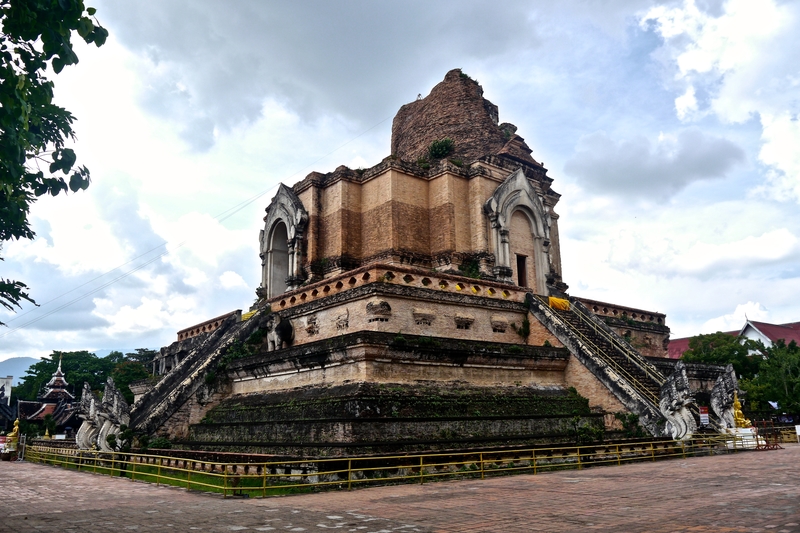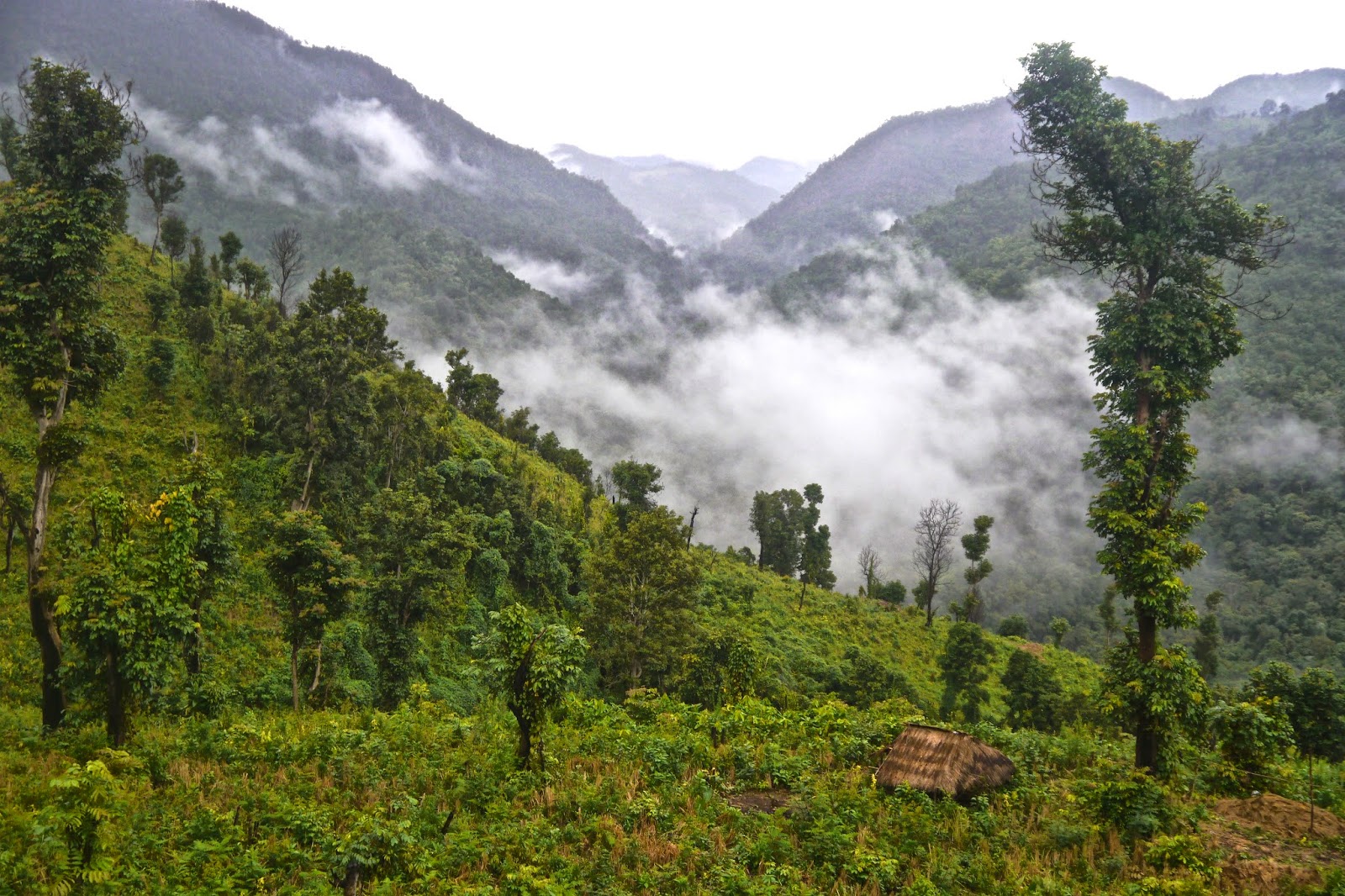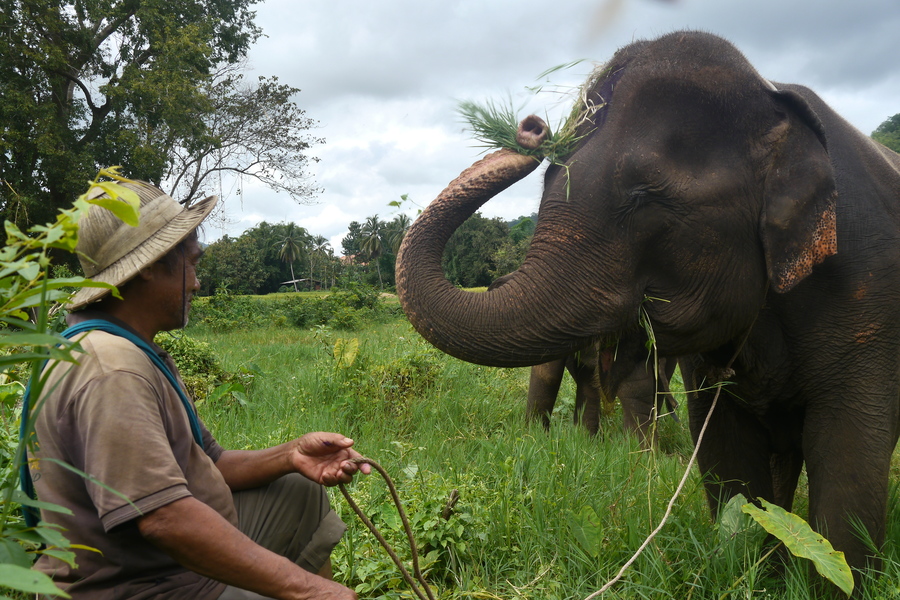
Ran Tong Elephant Sanctuary near Chiang Mai
For most travelers to Thailand, riding an elephant is a top priority. There is something about the notion of lumbering through the rolling tropical hills atop a five ton gentle giant, that elicits imagery of exotic and faraway lands.
I’m not going to lie. Like many others, I’ve thought about it too. Riding elephants has been marketed as a uniquely “Thai” experience. And elephant rides remain top bucket list priorities for many.
But the ethics around elephant riding are murky at best. Thailand’s elephant tourism industry is mired in animal abuse and mistreatment.
So I tabled my elephant riding plans and chose a more humane animal encounter instead.
ELEPHANT SANCTUARIES IN THAILAND
In order to rescue animals from street-begging and heavy labor, conservation centers have mushroomed around the country and taken the animals into their care.
I had originally planned on visiting the Elephant Nature Park–a refuge for elephants that have been abused and neglected in the logging and tourism industries. The park has stellar reviews online and is incredibly popular with tourists.
Unfortunately, my lack of planning meant that the park was fully booked during my visit. (The fact that my visit coincided with Thailand’s yearly lantern festival did not help).
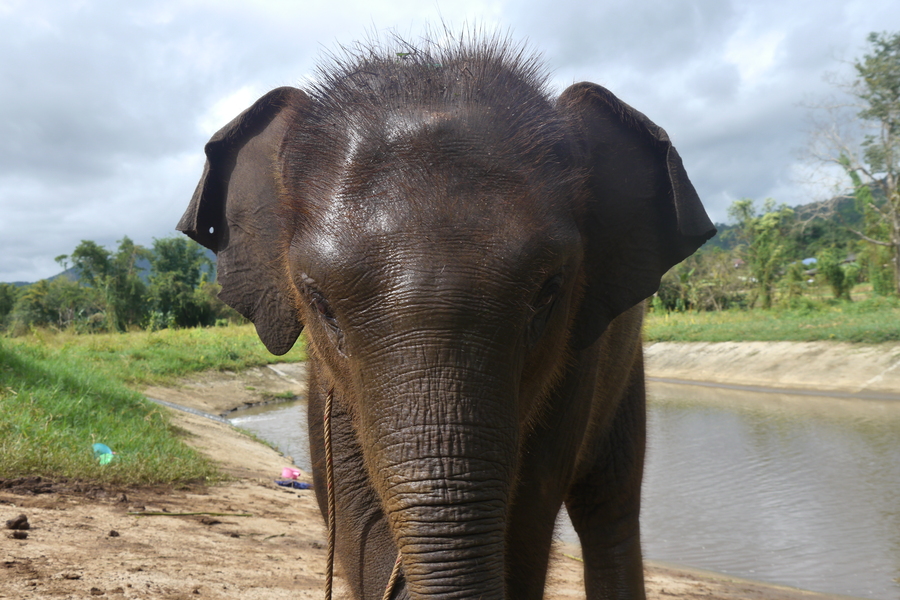
Knowing that I still wanted to spend a day with elephants, I leafed through countless brochures in the hostel lobby to try to find an alternative to the Nature Park. It seemed that all the other tours functioned more for the entertainment and curiosity of the tourists, than for the well-being of the animals.
A few programs stood out for their apparent concern of the animal welfare.
Among them, was the Ran Tong Sanctuary.
THE RAN TONG ELEPHANT SANCTUARY
After a bit of online searching and consulting with the hostel staff, I booked a tour of the Ran Tong Elephant Sanctuary.
Like the Elephant Nature Park, Ran Tong is a refuge for elephants that have been neglected, orphaned and physically abused. The center purchases the animals from private owners and seeks to rehabilitate them by providing medical care and nursing them back to health.
The center has housed 40 animals since it was founded in 2007. There are currently ten than reside on its grounds.
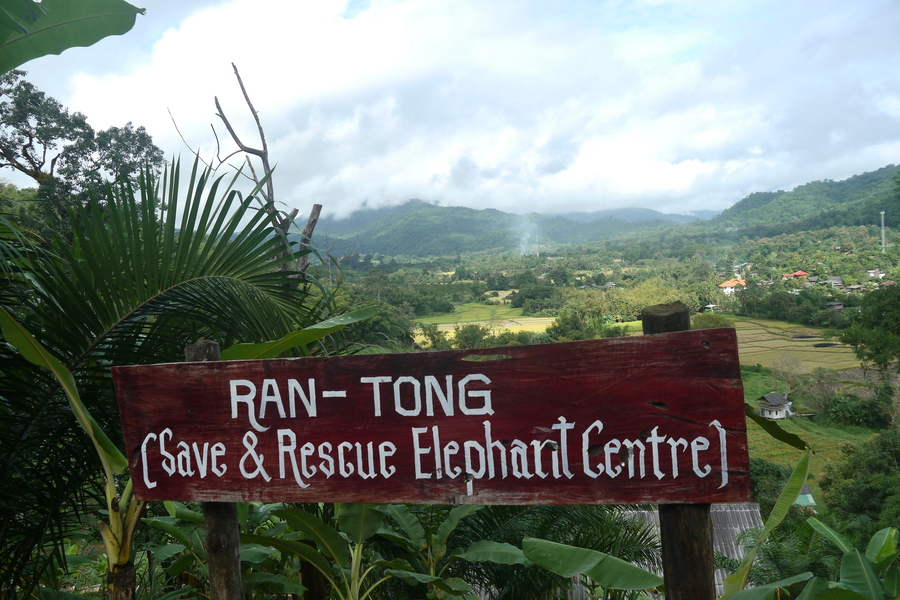
Ran Tong relies on tourists to generate income for elephant rehabilitation. Because of this, the center offered limited elephant riding at its inception.
Fortunately, a lot has changed at the Ran Tong Elephant Sanctuary since my visit. The center no longer allows visitors to ride elephants—a development that I find positive in every regard.
Today, the Ran Tong Save and Rescue Center offers half and full day elephant care programs. The programs allow visitors to feed and bathe the animals.
-
ELEPHANT RIDING AT RAN TONG
The fact that Ran Tong offered riding programs when I visited gave me pause.
I would have preferred to visit a center that did not offer riding as part of its program, but was at least happy that the mahouts (trainers) were not allowed to chain, beat, kick or slap the elephants. They did not force them to draw pictures or stand on their hind legs in order to entertain visitors. The center only paired tourists with the healthiest elephants, ensured visitors sat on the napes of their necks rather than their fragile backs, and prohibited the use of large platforms for riding. The platforms used by many tour companies are especially dangerous to the animals because they weigh nearly 300 pounds. Many of the elephants I interacted with at Ran Tong had permanent spinal damage due to years and years of hauling tourists around on platform-mounted thrones.
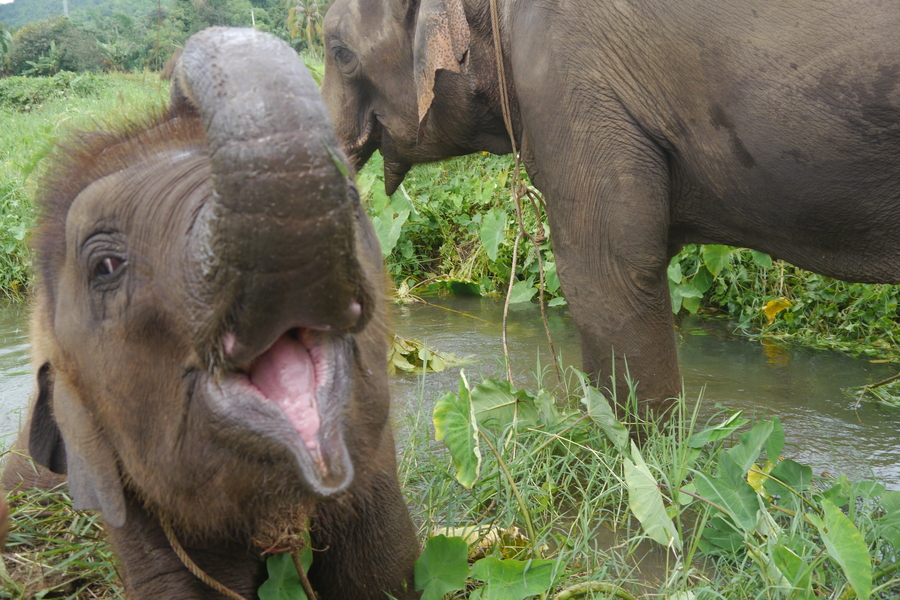
Despite the romantic notion of riding atop a three meter gentle giant, I opted to participate in Ran Tong’s no riding program.
I’ve read that, since my visit, the Ran Tong Sanctuary has done away with the elephant riding programs.
-
ELEPHANT FEEDING
We started the tour with elephant feeding. Our guides provided us with buckets full of bananas so that we could feed the animals out of our hands and begin gaining their trust. The animals devoured the bananas so quickly that I merely had time to pluck another banana off its stem, before I would feel a leathery trunk prodding me for another piece of fruit.
-
ELEPHANT BATHING
When our buckets were empty and the mahouts felt that the elephants had gained sufficient trust, I paired up with an old female elephant and led her through the muddy fields to drink and play in the water.
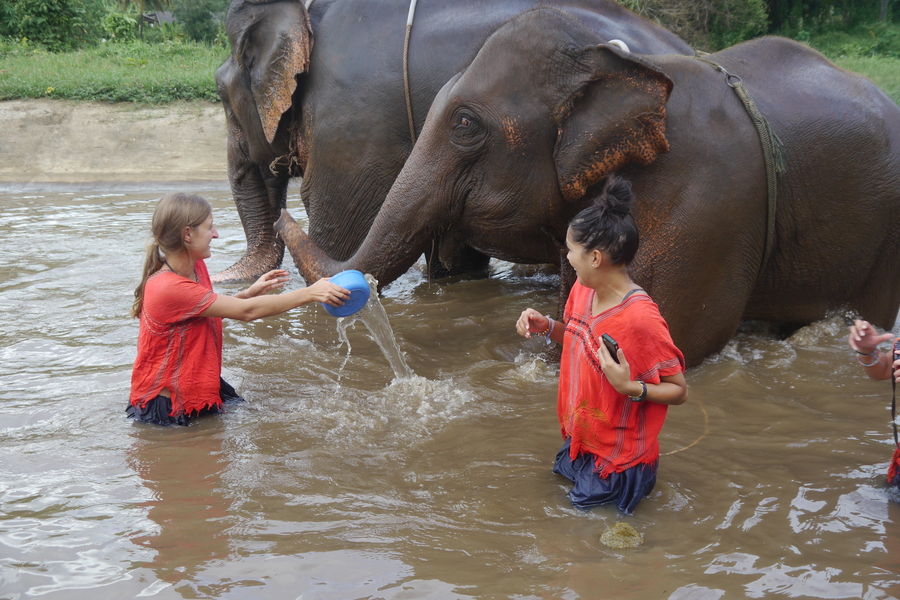
I walked with her barefoot across green fields, my feet squishing in the puddles of slimy mud, until we reached a small river. At the river, I let go of the rope I had used to guide her and watched as my elephant splashed around in the water and rolled in the mud with her friends.
OTHER ETHICAL ELEPHANT SANCTUARIES IN CHAING MAI
I had a wonderful time at the Ran Tong Elephant Sanctuary during my visit to Chiang Mai. For the most part, the animals seemed well taken care of. And I’m especially heartened to hear that the organization has stopped offering elephant rides to guests.
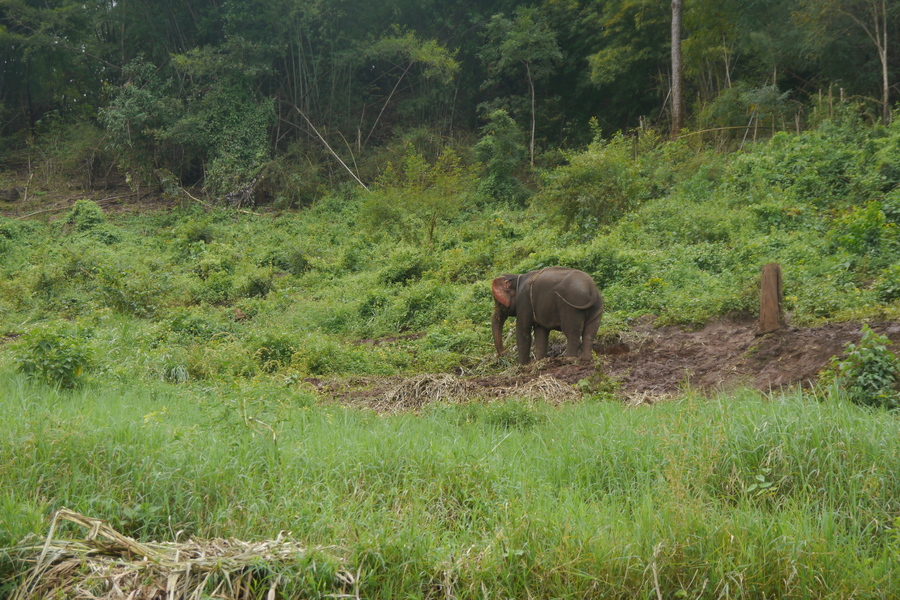
But is it the best and most ethical elephant sanctuary in Thailand? Probably not. The fact that they offered a riding program when I visited a few years ago, indicates that they didn’t put the wellbeing of the animals above profit. After my visit, I also read reviews from other guests stating that they saw mahouts poking the elephants with sharp objects to get them to comply. I did not personally witness this behavior, though I find the allegations concerning.
If you decide to visit a different elephant rescue, there are other opportunities for ethical elephant encounters in Chiang Mai.
-
THE ELEPHANT NATURE PARK
The Elephant Nature Park is the most renowned elephant orphanage in the Chiang Mai area. The center has been running since the 1990s and offers once-working elephants the chance to rehabilitate and relax. The center occupies an area of 250 acres in Northern Thailand.
The Elephant Nature Park offers half day programs (morning and afternoon) and full day programs, as well as overnight volunteer stays.
The Elephant Nature Park does not offer elephant bathing or riding programs.
-
HAPPY ELEPHANT HOME
Like the Elephant Nature Park, the Happy Elephant Home offers half day, full day, and overnight visits. The center gives visitors the opportunity to bath and feed the elephants, but does not offer riding.
The sanctuary lies one hour outside of Chiang Mai.
ELEPHANTS AND LOGGING IN THAILAND
Elephants have been prominent in Thai culture and folklore for centuries. Yet, Thailand has seen a dramatic drop in the numbers of wild elephants in recent years. This drop can be attributed to loss and destruction of habitat, illegal poaching for ivory and the sale of animals to tour operators.
Until the ban of the logging industry in 1989, elephants were instrumental in assisting their owners with clear-cutting the country’s forested areas. Ironically, by working in the logging industries, elephants were involved in the destruction of their own environments. As a result, their work contributed to a rapid decline in the number of their kin throughout the country.
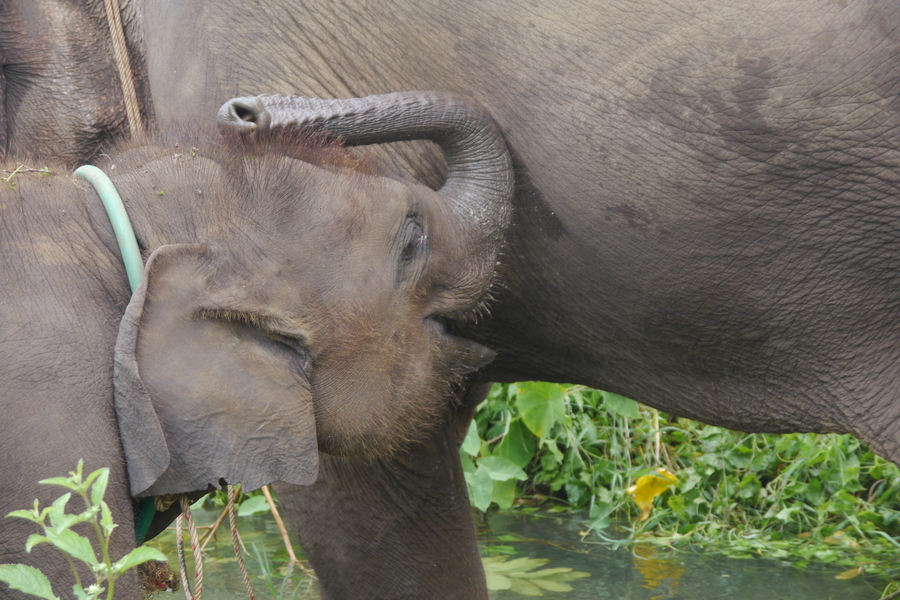
However, while generally a good thing, the logging-industry ban has acted as a double-edged sword for the well-being of the animals. On the positive side, the animals no longer have to toil laboriously at the hands of their owners to clearcut the very areas where they once roamed wild.
Yet, on the other hand, lack of employment in the logging industries has left many elephants hungry and neglected at the hands of owners who no longer have the means to provide them food. Healthy male elephants eat nearly 350 pounds of food every day, which is no small amount for their owners to provide.
As a result, many elephant owners have entered the lucrative business of street-begging with their elephants. Today, though illegal, it is still common to see elephants roaming the streets of Bangkok–eating plastic bags, food scraps and any other odds and ends they can find–as their owners parade them through the streets to collect baht.
CAN YOU SEE ELEPHANTS IN THE WILD?
Around half of Thailand’s 3,000 elephants live in the wild.
Elephant sanctuaries and rehabilitation centers provide your only guaranteed wildlife sightings. However, it is also possible to admire some elephants in their natural habitats if you visit the right places. Elephant safari locations in Thailand include Khao Yai National Park and Kui Buri National Park.
I’ve seen Asian elephants on safari in Udawalawe Park in Sri Lanka and, simply put, the experience was unparalleled. A visit to the Ran Tong Elephant Sanctuary allowed me close contact with the friendly giants, but it still couldn’t compare with the thrill of encountering them on safari.
I’m sure that bathing the large mammals in brown poopy waters is not the romantic image that most people envision when traveling to Thailand. Elephant riding has been romanticized as a once-in-a-lifetime experience and I, too, had initially wanted to partake.
But some things are not worth doing merely so that they can be checked off a list.
I’m so happy that I chose to forego elephant riding in Thailand.
In fact, after learning about the abuse that elephants throughout Thailand endure on a daily basis due to curious tourists, I decided to remove elephant riding from my bucket list completely.
